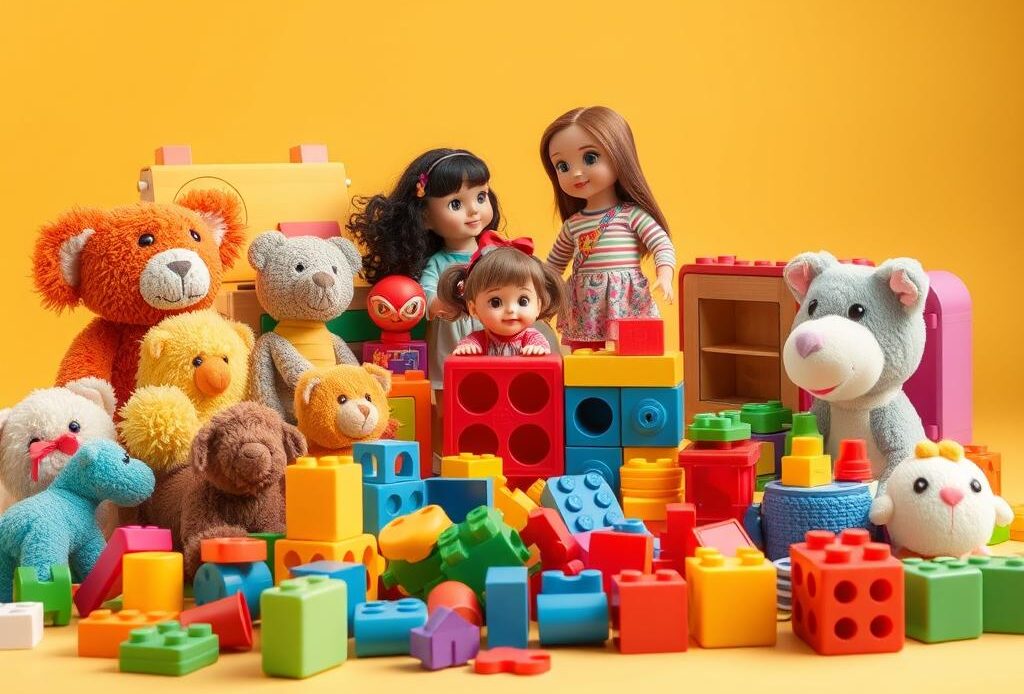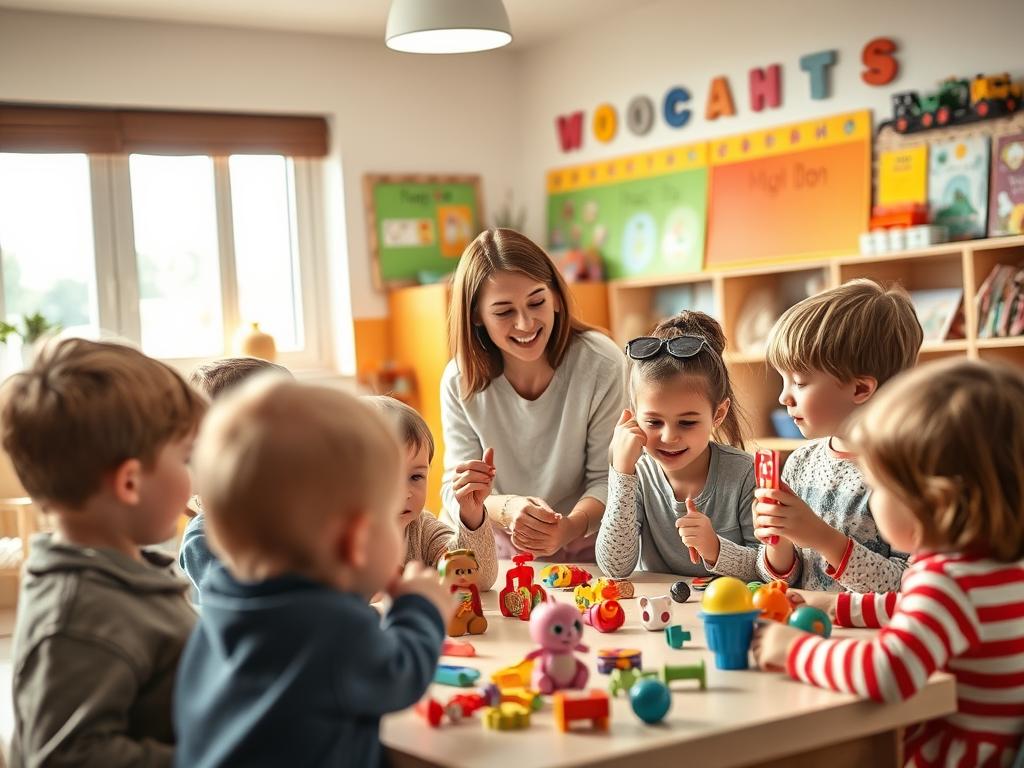
Playtime isn’t just about fun—it’s a powerful tool for building language development in children. Speech-language pathologists emphasize that everyday items like baby dolls, farm sets, or even bubbles can spark meaningful interactions. These activities help toddlers practice pretend play, mimic real-life routines, and experiment with new words naturally.
Simple games like feeding a toy animal or making animal sounds with a farm set encourage kids to expand their vocabulary. Bubbles, for example, turn into opportunities to practice words like “pop” or “more.” The key is to follow the child’s interests—whether they love stacking blocks or role-playing with a toy car. Therapists suggest that repetition and cause-effect play strengthen speech and listening skills over time.
Collaborative play with caregivers is especially effective. When adults join in, they model phrases, ask questions, and create richer learning moments. Adapting activities to match a child’s age or abilities, as seen in speech therapy techniques, ensures progress feels joyful, not forced. Even basic toys become tools for connection when paired with creativity and patience.
Key Takeaways
- Pretend play with dolls or farm sets builds early language skills.
- Bubbles and interactive games encourage word repetition and engagement.
- Child-led play fosters natural communication growth.
- Caregiver involvement amplifies learning during shared activities.
- Therapy-based strategies adapt play to support individual needs.
- Simple toys can teach cause-effect relationships and social cues.
Engaging Through Pretend Play: Unlocking Communication Skills
Imaginative scenarios with everyday items do more than entertain—they build essential communication foundations. Speech therapists often use baby dolls to help children practice phrases like “time to eat” or “goodnight.” These routines mirror real-life moments, making language learning feel familiar and safe.
Building Routines with Interactive Doll Play
Feeding a doll or tucking it into bed creates opportunities to introduce new words. A 2022 study found that kids who engaged in daily care routines with dolls used 40% more descriptive terms. Parents can ask questions like, “What does the baby need?” to spark dialogue. This method strengthens speech patterns through repetition.
Role Play and Imaginative Scenarios
Creating stories with a farm set or doctor kit lets children experiment with tone and emotion. For example, pretending a toy horse is “galloping fast” or “sleeping quietly” teaches varied vocabulary. Therapists note that kids often mimic adult intonation during these games, refining their social cues.
| Activity | Skills Developed | Therapy Connection |
|---|---|---|
| Doll mealtime | Sequencing, descriptive language | Used in 68% of speech sessions |
| Animal role-play | Tone variation, emotional expression | Boosts word retention by 30% |
| Storytelling with props | Sentence structure, creativity | Encourages peer interaction |
Simple adjustments make playtime impactful. Rotating toy ideas every few weeks maintains interest. Remember: the goal is joyful exploration, not perfection. As one therapist shares, “When kids lead the game, they own the learning.”
Using Toys for Better Communication: Key Strategies
Structured play unlocks hidden potential in everyday interactions. Speech therapists emphasize two core methods: repetition and cause-effect exploration. These approaches turn ordinary moments into language-building opportunities.

The Power of Repetition and Cause & Effect
Repeating phrases during play helps toddlers recognize patterns. Saying “ready, set, go!” before rolling a car down a ramp teaches anticipation. A 2023 study showed kids exposed to rhythmic phrases during play sessions learned new vocabulary 50% faster.
Cause-effect toys like car ramps or pop-up boxes create clear “action-result” connections. Pushing a toy vehicle and watching it zoom reinforces the idea that speech leads to responses. Therapists use these tools to model conversational turn-taking.
| Activity | Language Skill | Therapy Benefit |
|---|---|---|
| Repeating doll bedtime routines | Sequencing words | Builds sentence structure |
| Car ramp experiments | Action verbs | Encourages question-asking |
| Pop-up toy games | Exclamatory phrases | Strengthens vocal inflection |
Baby dolls offer predictable scenarios for practice. Washing a doll’s face while saying “splash, splash” gives children safe patterns to mimic. Research indicates structured doll play increases word attempts by 35% in late talkers.
Consistency matters. Setting a 10-minute daily play session with the same toy set reduces anxiety. As Dr. Elena Torres, a pediatric SLP, notes: “Familiarity breeds confidence. When kids know what’s coming, they’re more likely to participate verbally.”
Toy Selections that Enhance Language Development
The right playthings can turn everyday moments into language-rich experiences. Speech therapists recommend items that spark imitation, sound exploration, and routine-based interactions. Three categories stand out for their proven impact on communication skills.
Interactive Baby Dolls and Real-Life Routines
Dolls with feeding bottles or clothing fasteners let children mirror daily activities. Acting out bath time or bedtime with a baby doll teaches phrases like “all clean” or “night-night.” Therapists report kids who engage in doll care routines learn 22% more action words monthly.
Dynamic Farm Sets and Imitation Play
Barnyard animal collections invite mooing, neighing, and storytelling. Matching figurines to picture cards builds naming skills. A 2023 Northwestern University study found farm play boosts toddlers’ ability to identify creatures by sound 60% faster than digital apps.
Engaging with Bubbles for Fun Sounds and Gestures
Blowing bubbles teaches cause-effect through gestures like pointing or clapping. Kids practice exclamations (“Wow!”) and directional words (“up,” “pop”). This simple activity strengthens breath control—a key speech foundation.
| Age | Best Toy Types | Target Skills |
|---|---|---|
| 1-2 years | Textured blocks, sound-making toys | Single-word responses |
| 2-3 years | Role-play sets, simple puzzles | 2-3 word phrases |
| 3-5 years | Detailed playsets, storybooks | Narrative building |
Try these ideas: Hide farm animals under blankets to prompt “where” questions, or have the child “teach” a doll to brush teeth. As one parent shared, “My son started saying ‘moo’ during bath time—now we name all his rubber ducks!” The best tools blend familiarity with gentle challenges.
Creative Play Ideas to Stimulate Speech and Vocabulary
Everyday objects become magical tools when paired with imagination. Simple items like nesting cups and car ramps transform into dynamic language-building adventures. These activities merge hands-on exploration with speech development, making learning feel like pure fun.

Nesting Cups: Hidden Treasures for Word Discovery
Stacking colorful cups teaches size comparisons like “big” and “small.” Hide a tiny animal figurine underneath to spark curiosity. Ask, “Who’s hiding here?” as the child discovers the surprise. This game builds anticipation and introduces descriptive words.
Try these variations:
- Count cups aloud while stacking (“One! Two!”)
- Name colors during tower crashes (“Red cup fell!”)
- Practice prepositions: “Put the ball under the cup”
Car Ramps: Zooming into Sound Exploration
Race toy vehicles down ramps to practice action sounds like “vroom” or “beep.” Pause before releasing the car and say, “Ready… set…” letting the child shout “GO!” This turn-taking mimics conversational patterns.
Create a car wash station with sponges and water. Narrate each step: “Scrub the wheels! Splash the windows!” Research shows kids in therapy programs using this method learn 28% more verbs.
| Activity | Target Skills | Pro Tip |
|---|---|---|
| Cup stacking races | Size comparisons, counting | Use exaggerated facial expressions |
| Ramp sound challenges | Verbs, exclamations | Whisper “slow” vs shout “fast!” |
| Hidden object games | Question formation | Wait 5 seconds before revealing items |
Blend structured ideas with free play. Let the child invent new rules for cup towers or car tracks. As speech expert Dr. Mia Torres notes: “When laughter fills the room, language flourishes.” These playful moments build communication skills that last a lifetime.
Maximizing Interaction Through Play and Therapy Techniques
Teamwork between caregivers and professionals turns play into powerful learning moments. Speech therapists often recommend blending structured therapy methods with spontaneous games at home. This approach helps kids generalize skills across settings while keeping activities engaging.
Bridging Home and Clinical Practice
Joint play sessions allow parents to observe expert techniques firsthand. For example, therapists might demonstrate how pausing during a car race game encourages the child to verbalize “go!” These shared moments create consistency in language modeling.
Try these ideas:
- Mirror therapy exercises with household toys like stacking cups
- Incorporate turn-taking into snack time using a “my turn/your turn” rhythm
- Use picture books to practice predicting story outcomes together
| Activity | Participants | Language Focus |
|---|---|---|
| Toy Car Turn-Taking | Parent & Child | Action words, anticipation |
| Storybook Guessing Game | Therapist & Child | Descriptive terms, inference |
| Doll House Roleplay | Group Session | Social scripts, pronouns |
Positive reinforcement proves crucial. Celebrate attempts rather than perfection—a high-five for saying “ca” instead of “car” builds confidence. Research from child-centered play therapy programs shows this method increases verbal participation by 45%.
One therapist shares: “When families adopt therapeutic play skills, progress accelerates. It’s not about fancy toys—it’s about intentional interaction.” Simple adjustments create rich communication opportunities that feel like pure fun.
Conclusion
The journey toward stronger communication begins with curiosity and a toy box full of possibilities. Strategies like repetition with baby dolls, imaginative role-play, and cause-effect games with car ramps create natural learning moments. These methods help children connect actions to words while building confidence.
Variety matters. A mix of toys—from bubbles to farm sets—keeps engagement high. Collaborative activities with caregivers or therapists reinforce skills through joyful routines. Research shows kids thrive when play aligns with their unique interests.
Every toy, whether simple stacking cups or detailed playsets, offers hidden therapy benefits. Caregivers can experiment with ideas like animal sound games or interactive storytelling with books. What works for one child might differ, so flexibility is key.
Language growth unfolds gradually. Celebrate small wins, like a new word during bath time or giggles over popping bubbles. Share successes with other families and explore fresh approaches together. After all, the best tools are those that spark both laughter and learning.
FAQ
How does pretend play help children develop communication skills?
Pretend play encourages kids to express ideas, imitate real-life scenarios, and practice social interactions. By role-playing with toys like baby dolls or farm sets, they learn new vocabulary, take turns in conversations, and build confidence in expressing emotions.
What are effective strategies for using toys to support language development?
Repetition and cause-and-effect activities work well. For example, stacking blocks while naming colors or pushing a car down a ramp and mimicking “vroom” sounds helps reinforce words. Matching gestures with simple phrases, like blowing bubbles and saying “pop,” also strengthens associations.
Which toys are best for encouraging speech in toddlers?
Interactive toys like baby dolls, farm animal sets, and bubbles are ideal. Dolls allow kids to act out routines like feeding or bedtime, while farm sets introduce animal sounds and names. Bubbles promote gestures like pointing and words like “more” or “up” during play.
Can playtime replace formal speech therapy sessions?
While play strengthens communication, it’s not a substitute for professional therapy. However, blending play with therapy techniques—like using nesting cups to practice “big” and “small” or car ramps for action words—can accelerate progress. Always consult a speech-language pathologist for tailored strategies.
How do cause-and-effect toys improve communication?
Toys like pop-up buttons or musical instruments teach kids that actions lead to outcomes. This builds anticipation, encourages vocalizations (e.g., “go!” or “again!”), and helps them understand turn-taking—a key part of conversations.
What role do books play in combining play with language learning?
Books with textured pages or lift-the-flap features engage tactile and visual senses. Pointing to pictures, naming objects, or mimicking sounds (like “moo” for cows) during storytime expands vocabulary and reinforces connections between words and images.

